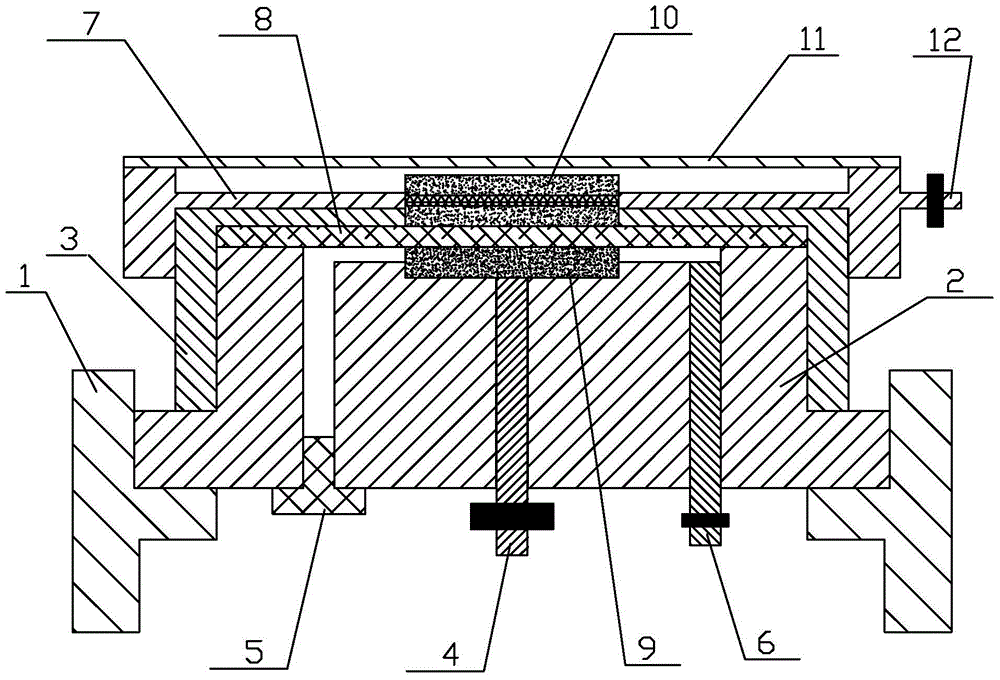An in situ xrd reaction chamber for testing the electrochemical reaction process
An electrochemical reaction and reaction chamber technology, which can be applied to measurement devices, scientific instruments, instruments, etc., can solve the problems of inconvenient maintenance, high price, complex structure, etc., and achieve the effect of easy assembly and disassembly, and simple structure.
- Summary
- Abstract
- Description
- Claims
- Application Information
AI Technical Summary
Problems solved by technology
Method used
Image
Examples
Embodiment Construction
[0024] Such as figure 1 As shown, the in-situ XRD reaction chamber for testing the electrochemical reaction process of the present invention includes a fixed seat 1, a negative electrode seat arranged on the fixed seat 1 and a positive electrode seat 7 arranged above the negative electrode seat, and a positive electrode seat 7 arranged on the positive electrode seat. The test window 11 at the top of the seat 7; wherein:
[0025] The fixed seat 1 is hollow cylindrical, and an annular convex card is arranged on the inner wall surface of the middle and lower part of the fixed seat 1;
[0026] The negative pole seat includes a negative pole base 2 and a negative pole screw cap 3, both of which are threadedly connected, a first through hole is opened in the middle of the negative pole spin cap 3, and a layer of diaphragm is arranged on the top of the inner cavity of the negative pole spin cap 3 8. The top of the diaphragm 8 is in contact with the top of the inner cavity of the scr...
PUM
 Login to View More
Login to View More Abstract
Description
Claims
Application Information
 Login to View More
Login to View More - R&D
- Intellectual Property
- Life Sciences
- Materials
- Tech Scout
- Unparalleled Data Quality
- Higher Quality Content
- 60% Fewer Hallucinations
Browse by: Latest US Patents, China's latest patents, Technical Efficacy Thesaurus, Application Domain, Technology Topic, Popular Technical Reports.
© 2025 PatSnap. All rights reserved.Legal|Privacy policy|Modern Slavery Act Transparency Statement|Sitemap|About US| Contact US: help@patsnap.com

